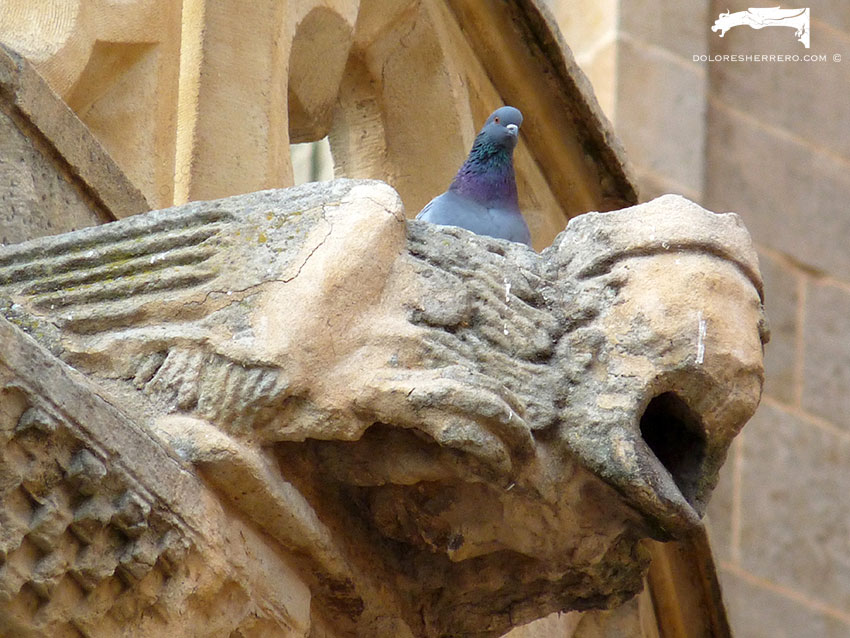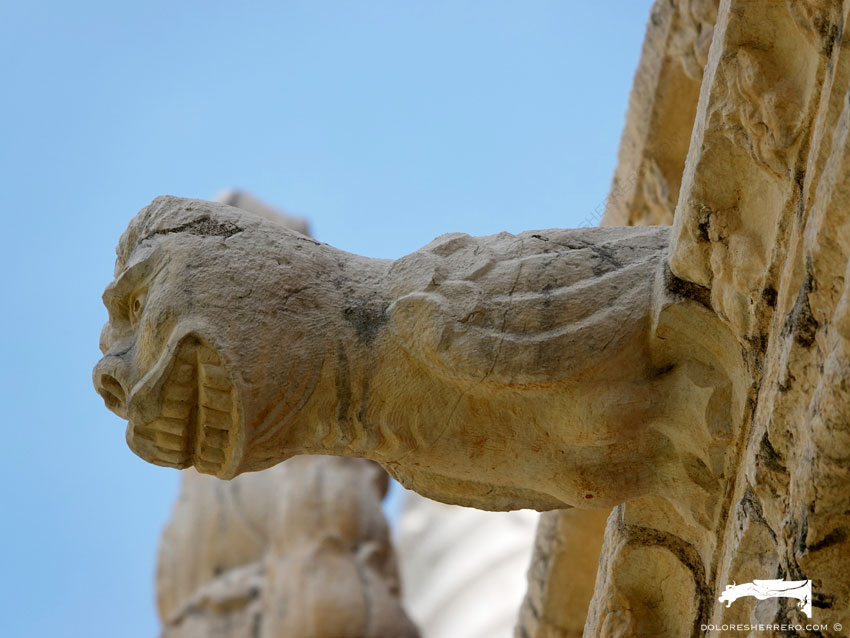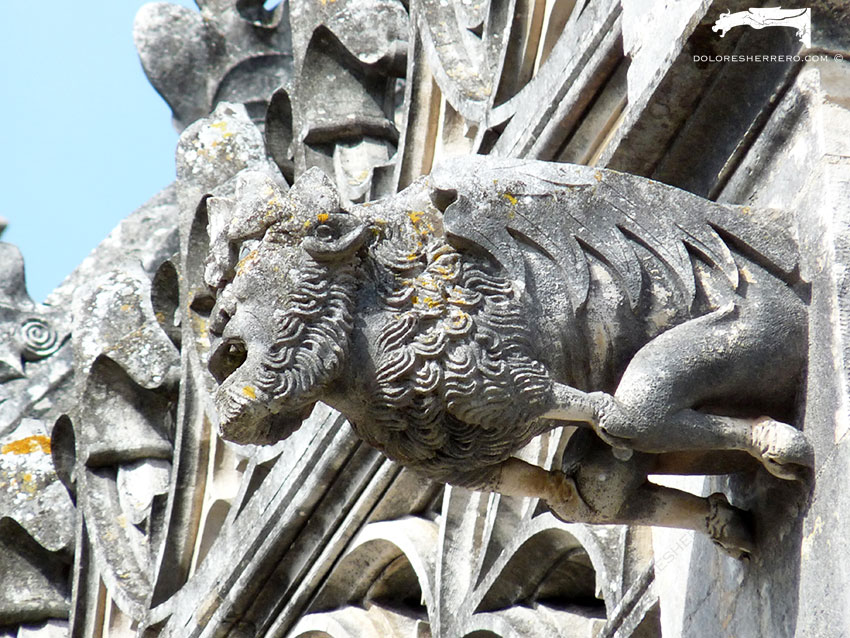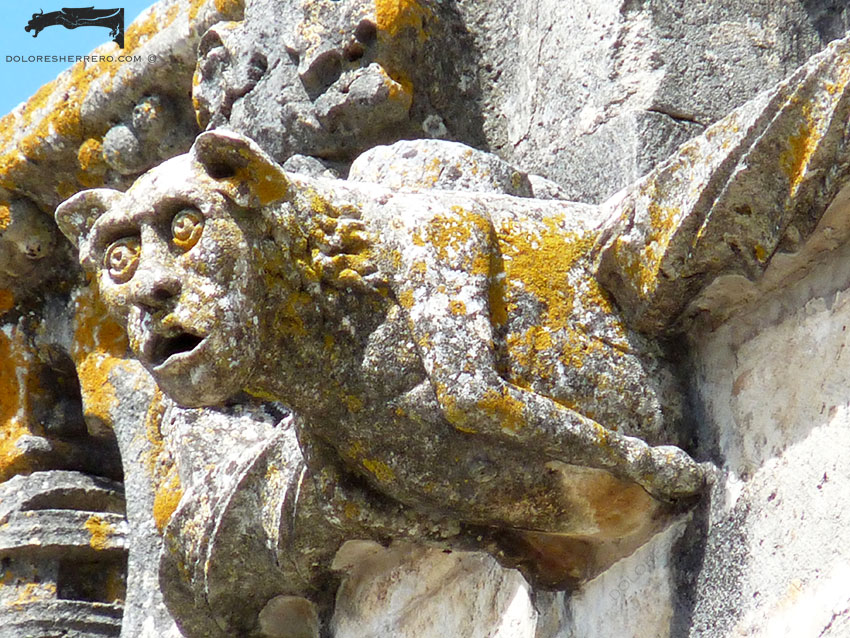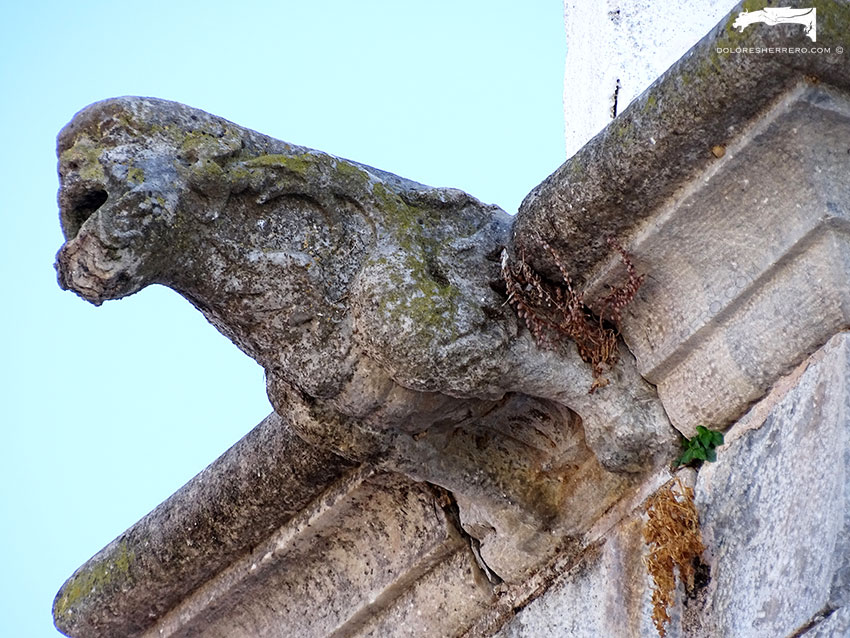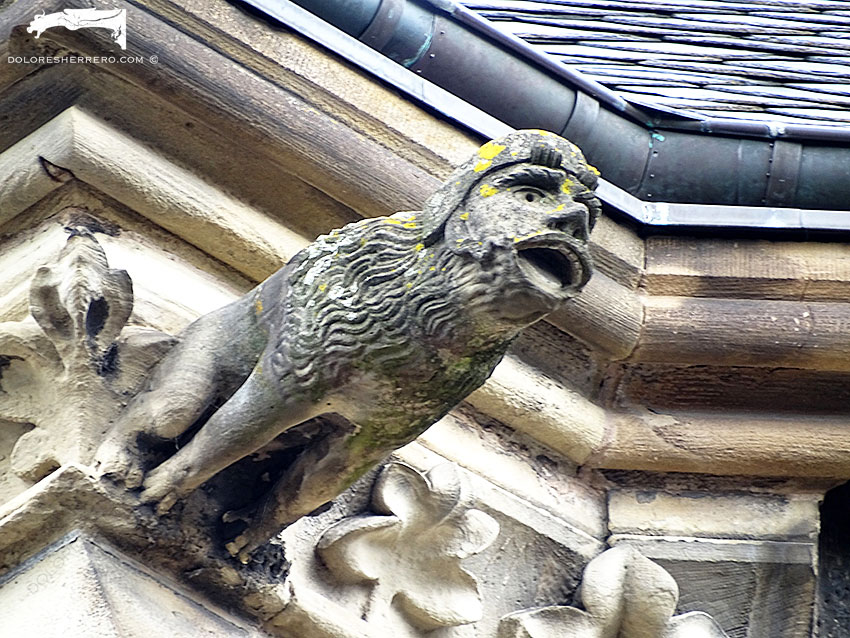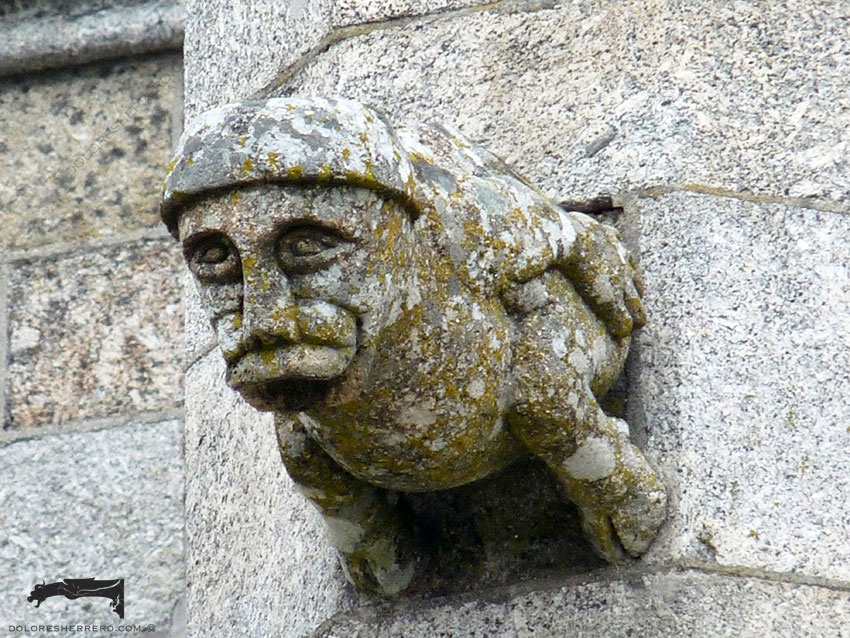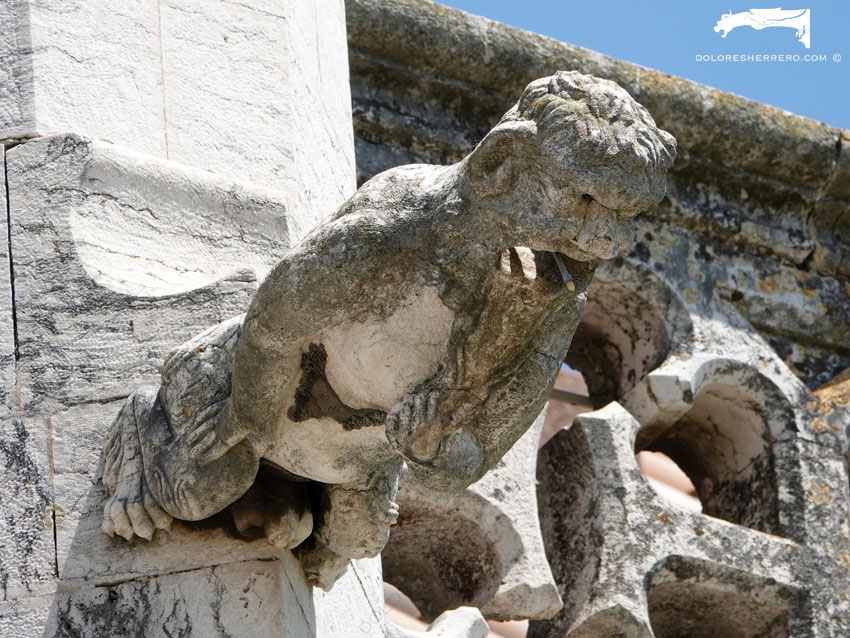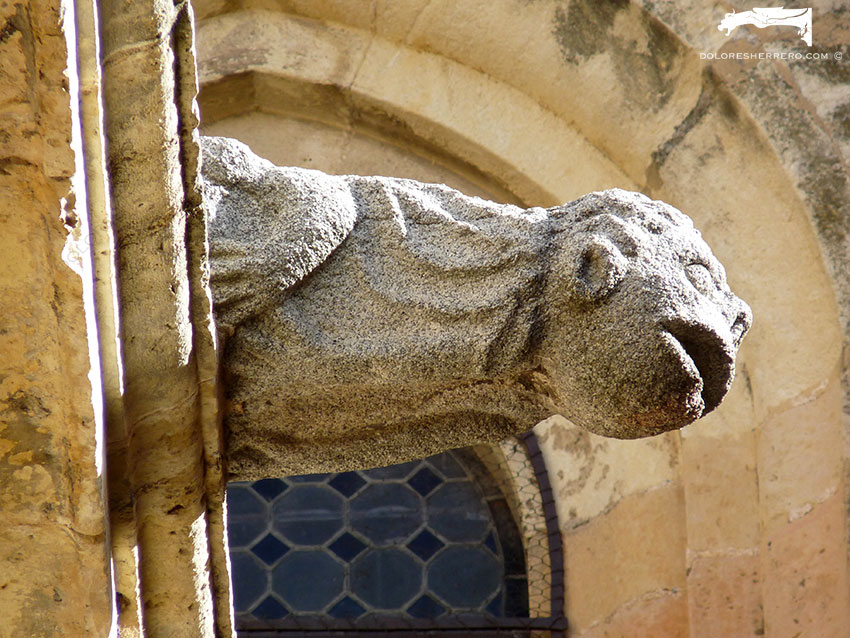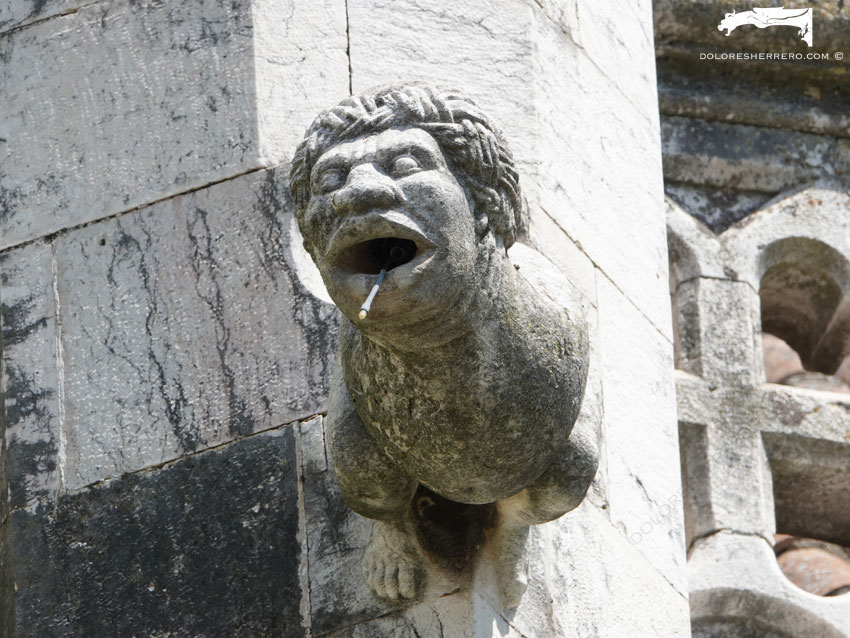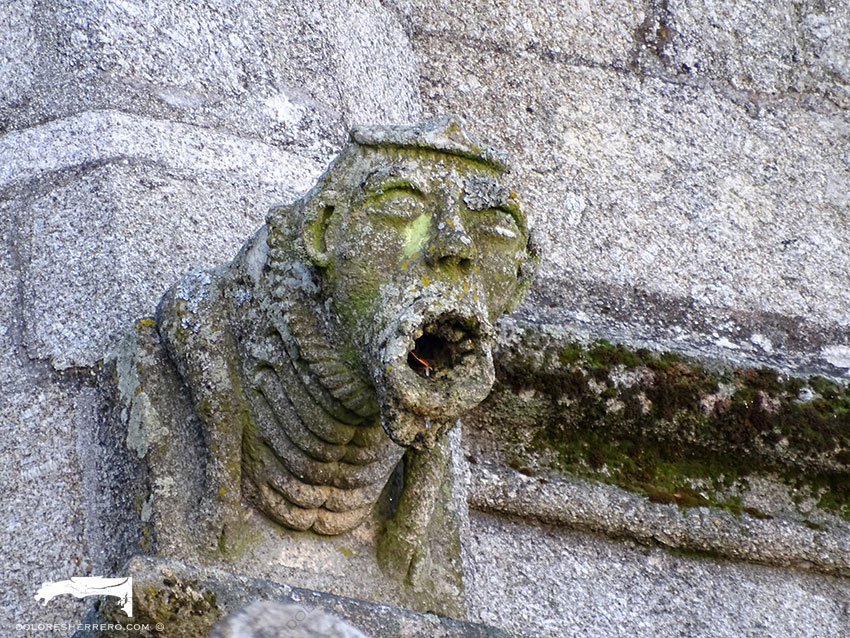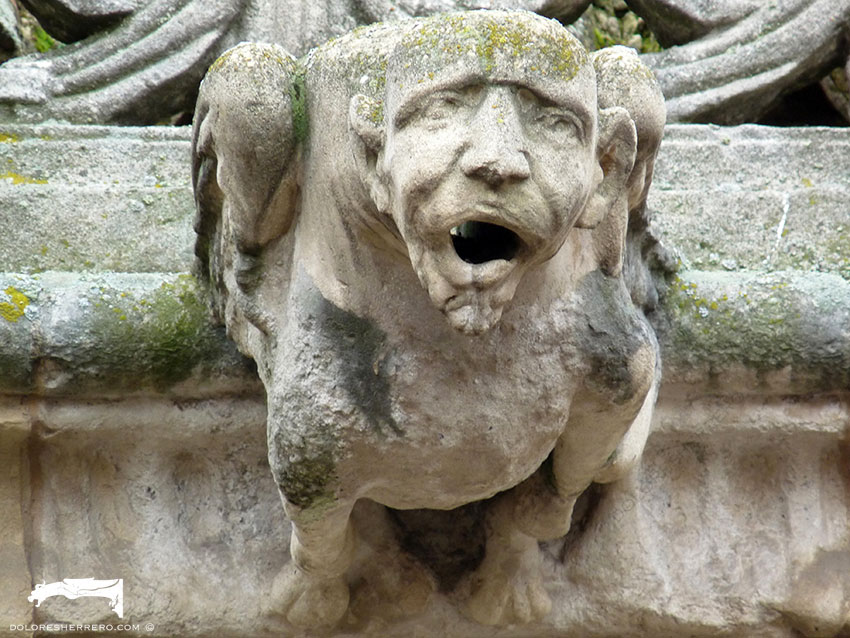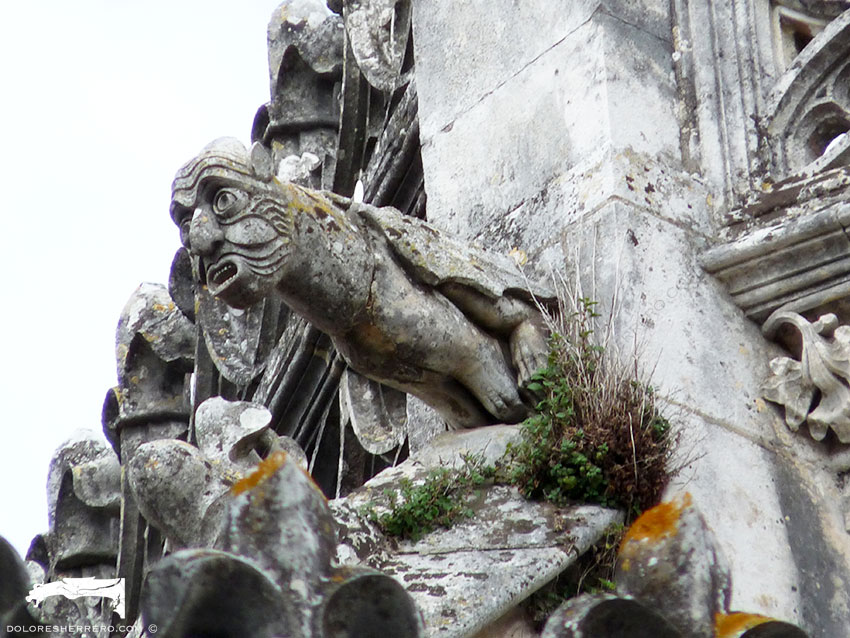As we saw in the first post about the anthropomorph, this is one of the most commonly represented figures in gargoyles.
In this second post, we are going to talk about their interesting symbolism.
Let’s remember that anthropomorphs are half human, animals that have human physical features or that have something that identifies them with men or women, such as clothing.
We know that monsters, including anthropomorphs, are linked to the mythology which, since Antiquity, has left a legacy of monstrous creatures in various cultures. However, as Ressot says in his research, “what is monstrous to one culture may not be for another. Each society creates a mythology for its own use and our purest monsters can be found in myths”. It is the various communities that create and disseminate myths, which is why their symbolism is so important. Although for us they are pure fantasy, for the people who created them they were real, they used them to explain the world around them and human beings so they could try and understand the meaning of life and death.
According to Wittkower, “monsters ― composite beings, half human, half animal ― play a role in the thought and imagination of all peoples in all eras. Everywhere, monsters have been endowed with the powers of gods or with the demonic forces of evil. Monsters play out their role in mythology and stories, in superstitions and portents”.
The anthropomorph has been portrayed in all the arts, and is the object of numerous theories and interpretations on its symbolism.
As a monster its negative nature is clear in the view of some classic authors like Horace (1st century BC), who in his Ars Poetica says: “If a painter should wish to unite a horse’s neck to a human head, and spread a variety of plumage over limbs [of different animals] taken from every part [of nature], so that what is a beautiful woman in the upper part terminates unsightly in an ugly fish below; could you, my friends, refrain from laughter, were you admitted to such a sight (…) Poets and painters [you will say] have ever had equal authority for attempting anything. We are conscious of this, and this privilege we demand and allow in turn. But not to such a degree, that the tame should associate with the savage; nor that serpents should be coupled with birds, lambs with tigers”.
Vitruvius (1st century BC), referring to interwoven decorations with grotesques, says: “Nowadays walls are painted more with monstrosities than depictions of real things”, and talks about inventions like “slender stems with men’s’ heads and animals joined to half of the body, and other monsters”.
Continuing with other theories and interpretations, in the Middle Ages, monstrous creatures were identified with infidel nations. Zumthor says that some French epic poems related the Saracens with men with heads of dogs, with beaks, or with their mouths in their navels. Foreigners, barbarians and people of other races were given a monstrous appearance. However, Wittkower reminds us that deformities and hybrids fulfilled a function in the thought and imagination of peoples.
For Dante, animals with human heads or torsos are symbols of evil and of Satan. They include satyrs, centaurs and sirens, also symbols of unbridled sexuality.
Linked to this idea, remember that gargoyles can also depict demonic figures with drooping breasts. As we saw when we discussed this symbolism, devils with women’s breasts appear in the late Middle Ages, at a time when women symbolised damnation and guilt. Kenaan-Kedar states that women monsters with animal heads and bodies and women’s breasts depicted women’s devouring nature.
Plus, let’s not forget, as we saw in the post on symbolism, the idea connected with the intimidating function of gargoyles on cathedrals and churches. These gargoyles portray a man-animal and could symbolise sinners that have progressively turned into animals when they were tempted into evil; souls condemned and punished for their sins and who were banned from entering churches. This theory is similar to the idea put forward by Sébastien Brant (15th-16th century) who discusses monsters as testimonies to divine will and as warnings or punishments.
Also connected with this, Mariño Ferro provides an interesting artistic source that appears on the doorway of Oloron-Sainte-Marie (France). It is a half-naked man transformed into an animal with bird’s feet and a monkey’s face because of his desire for a prostitute, in other words, he has been punished for his lust.
A fascinating and enigmatic creature, the anthropomorph appears depicted in all the arts. Once again, art and history present a figure belonging to the imaginary of monsters in our psyche, reproducing our terrors and fantasies. Although portrayals of anthropomorphs in art are countless, the gargoyle examples are sublime, one might even say second to none. Terrifying, disturbing, expressive, or fantastical, these gargoyles highlight the creativity of the sculptor, the human psyche, and its fascination with monsters.
Anthropomorphic Gargoyles
- Salamanca Cathedral (Spain)
- Jerónimos Monastery in Lisbon (Portugal)
- Convent of Christ in Tomar (Portugal)
- Church of Santa María Magdalena in Olivenza (Badajoz, Spain)
- Church of Our Lady in Trier (Germany)
- Guarda Cathedral (Portugal)
- Narbonne Cathedral (France)
- Jerónimos Monastery in Lisbon (Portugal)
- Segovia Cathedral (Spain)
- Jerónimos Monastery in Lisbon (Portugal)
- Guarda Cathedral (Portugal)
- House of Shells in Salamanca (Spain)
- Batalha Monastery (Portugal)
Bibliography consulted
FERNÁNDEZ RUIZ, B., De Rabelais a Dalí. La imagen grotesca del cuerpo, Valencia, Universitat de València, 2004.
GOMBRICH, E. H., El sentido del orden. Estudio sobre la psicología de las artes decorativas, Madrid, Editorial Debate, S. A., 1999.
KAPPLER, C., Monstruos, demonios y maravillas a fines de la Edad Media, Madrid, Ediciones Akal, S. A., 1986.
KENAAN-KEDAR, N., Marginal Sculpture in Medieval France. Towards the deciphering of an enigmatic pictorial language, Hants (England) and Vermont (USA), Scolar Press and Ashgate Publishing Company, 1995.
KLEIN, F., Mitos, Leyendas y Fábulas, Alcalá la Real (Jaén), Alcalá Grupo Editorial y Distribuidor de Libros (Colección “El Transeunte” nº 5, coord.: R. Ceballos Atienza y F. Toro Ceballos), 2007.
MARIÑO FERRO, X. R., El simbolismo animal. Creencias y significados en la cultura occidental, Madrid, Ediciones Encuentro, 1996.
REBOLD BENTON, J., Holy Terrors. Gargoyles on medieval buildings, New York, Abbeville Press, 1997.
RESSOT, J. P., Apología de lo monstruoso. Una lectura de la obra de Ramón J. Sender, Huesca, Instituto de Estudios Altoaragonses (Diputación de Huesca), 2003.
WITTKOWER, R., La alegoría y la migración de los símbolos, Madrid, Ediciones Siruela, S. A. Biblioteca de Ensayo 53, 2006.
ZUMTHOR, P., La medida del mundo. Representación del espacio en la Edad Media, Madrid, Ediciones Cátedra, S. A., 1994.

Doctor of Art History and researcher specializing in the study of gargoyles.
I am Dolores Herrero Ferrio, and my thesis, “An Approach to the Study of Gargoyles of Gothic Cathedrals in Castilla and León”, is dedicated to the study of these fascinating figures.
If you like gargoyles and art history, you will also enjoy my book, “The Gargoyle and Its Iconography,” a book I have written with great care for those interested in the world of gargoyles.
I have created my own Encyclopedia of Gargoyles, a Gargopedia to share with you, where you will discover all the secrets and wonders of these enigmatic sculptures.
I hope you enjoy this Gargopedia as much as I have enjoyed creating it, and remember that each gargoyle has a story to tell, and here you will discover them all.
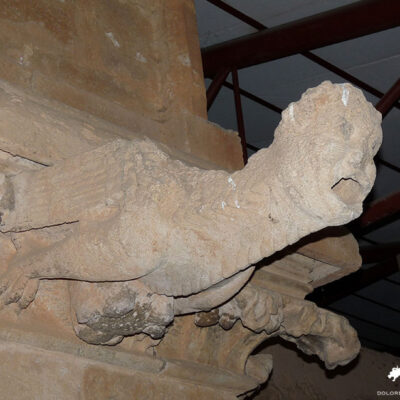 The Incredible, Unknown Gargoyles of El Burgo de Osma
The Incredible, Unknown Gargoyles of El Burgo de Osma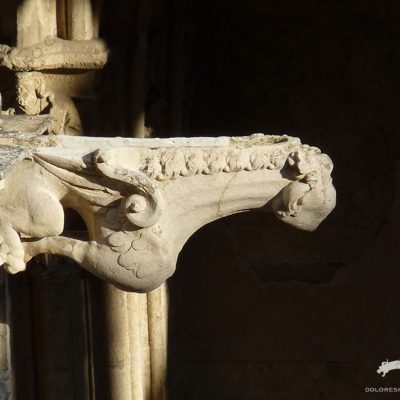 Demons and Monsters in the Gargoyles of the Cloister of León Cathedral
Demons and Monsters in the Gargoyles of the Cloister of León Cathedral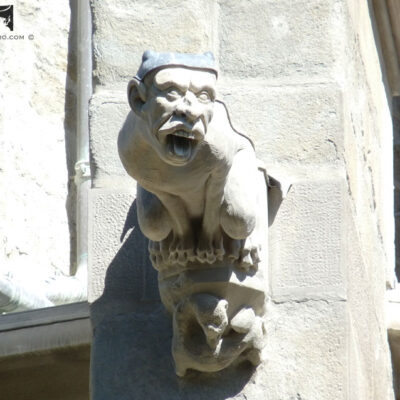 The Anthropomorph in Gargoyles: Part One
The Anthropomorph in Gargoyles: Part One El antropomorfo en las gárgolas: Parte II
El antropomorfo en las gárgolas: Parte II Gargoyles and the Representation of the Devil: Part Four
Gargoyles and the Representation of the Devil: Part Four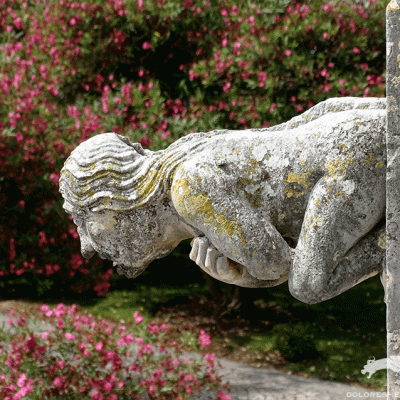 Women and their Representation in Gargoyles
Women and their Representation in Gargoyles